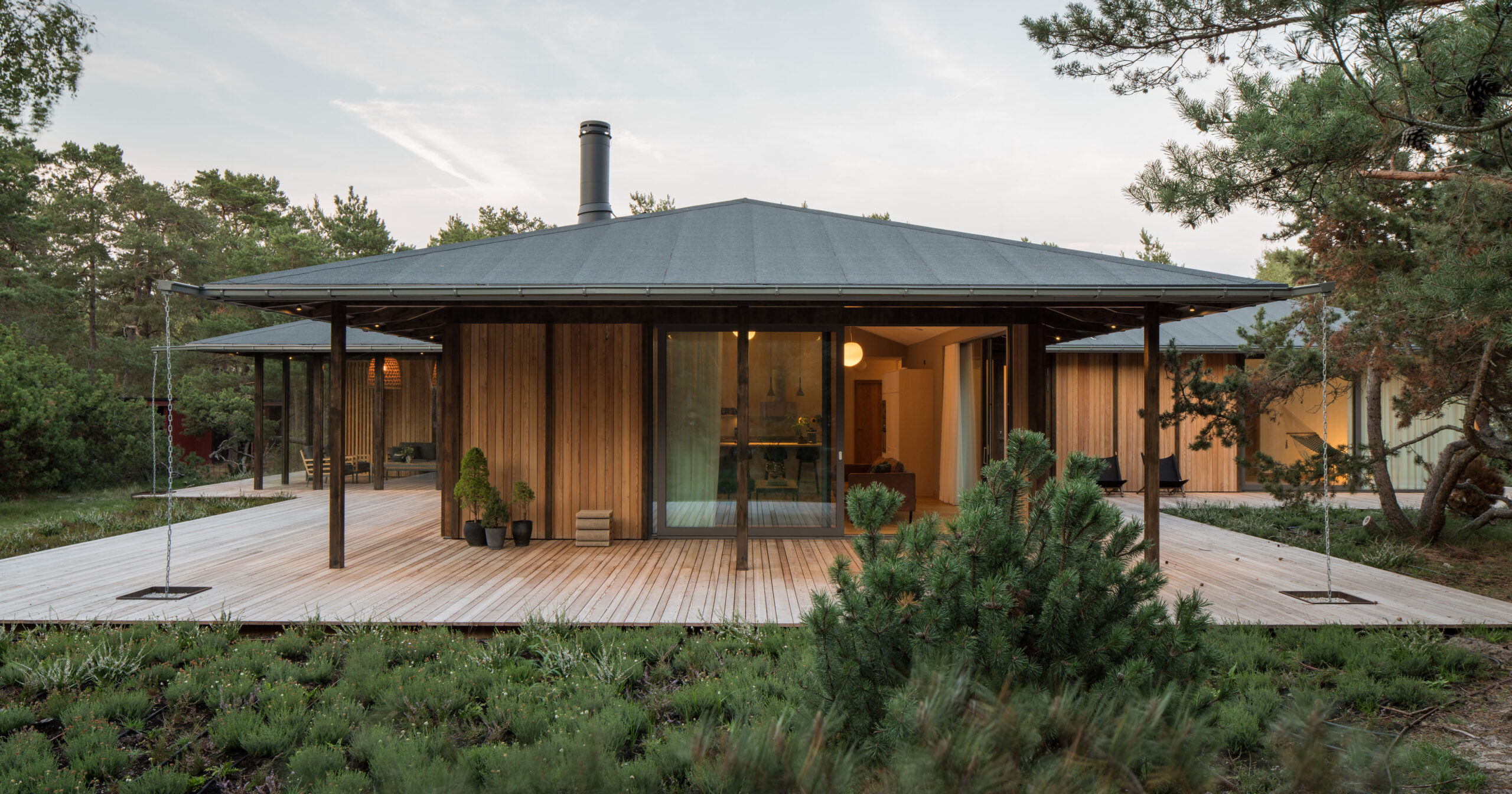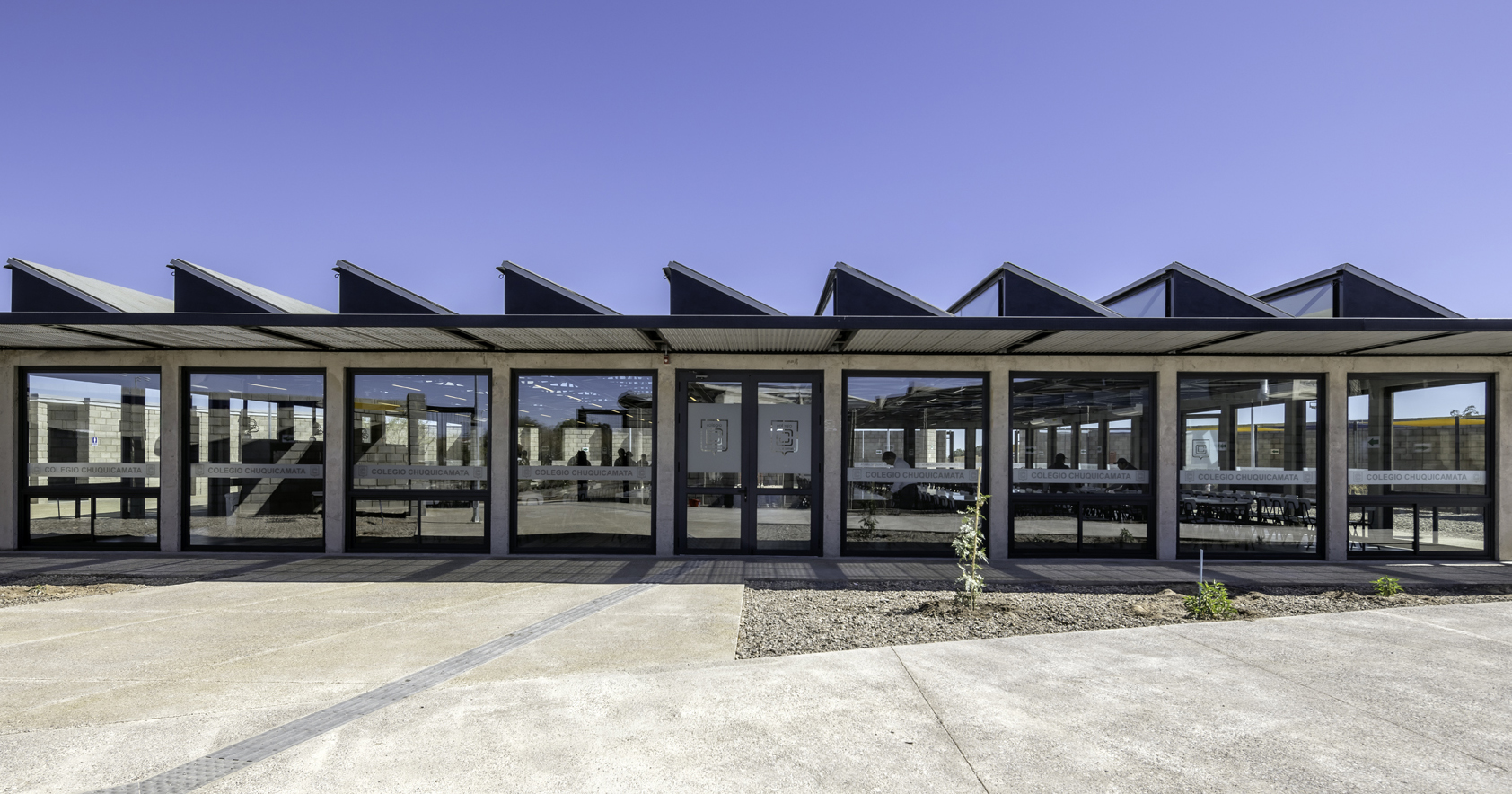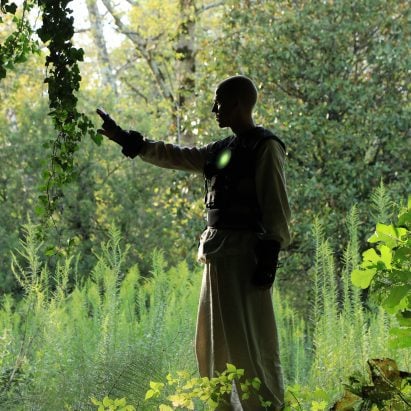Ten projects that illustrate Piers Taylor's call for "deeper and messier" architecture


British architect Piers Taylor advocates a radically local approach to contemporary architecture in his book, Learning from the Local. In this roundup, he picks 10 featured projects that embody the idea.
Published with the Royal Institute of British Architects, the book by Invisible Studio founder Taylor encourages the design of more contextual architecture that is responsive to local climate, communities and culture.
It features more than 30 case studies to exemplify this philosophy, including the work by renowned architects Frank Gehry, Glen Murcutt and Diébédo Francis Kéré.

Taylor said that his call for more local architectural design is not a "romantic plea" for pre-industrial or vernacular architecture, rather one for "radically contemporary" ways of embedding projects into their local context.
"It isn't so much a manifesto, but it is a call to all of us who care about the built environment to move beyond the shallow comfort of imitation and engage with a deeper, messier work," Taylor told Dezeen.
"The book has no examples of projects that call themselves vernacular," he explained.
According to the architect, the eclectic mix of projects in the book, which vary in style, typology and scale, demonstrates how the "beauty" of a project is determined by its connection to its context.
"What this book does is show what buildings can look like if they draw on these ecological, social, cultural and material networks," Taylor said.
"What I hope the book does is give people ammunition that it is possible to invent new ways of doing things that are simultaneously rooted in local conditions," Taylor added. "What you need to look at is quite literally the territory and the networks that your project sits within and draw on those things," he added.
However, Taylor also highlighted that adopting this more local approach to architecture would require the industry to relinquish some control in the design process.
"What needs to change radically is actually the mindset of architects," he said. "Unless we challenge how buildings are procured and conceived culturally by architects, we will end up with faceless, homogenised infrastructure that is in the pocket of power, money and politics."
Read on for Taylor's pick of 10 key projects from Learning from the Local:

Gando Primary School by Diébédo Francis Kéré
"Francis Kéré's Gando Primary School in Burkina Faso transforms the most modest resources into architectural intelligence.
"Built with local earth, shaped by community hands and ventilated through a double roof of clay and steel, it demonstrates that climatic logic and social engagement are inseparable. Kéré's process – training local workers, refining traditional techniques – aligns perfectly with Learning from the Local's theme of ecological embeddedness and social authorship.
"The building's elegance lies not in its form but in its collective making, showing that truly sustainable architecture grows from reciprocity, not technology."
Find out more about Gando Primary School ›

East Quay by Invisible Studio and Ellis Williams Architects
"In Watchet, Somerset, East Quay shows what happens when architecture is led by community ambition rather than developer vision.
"Conceived by the local social enterprise Onion Collective and designed collaboratively with Invisible Studio and Ellis Williams Architects, it combines artists' studios, workshops, galleries, and accommodation in a building governed and owned by the town.
"The project exemplifies Learning from the Local's emphasis on participation as form – where locality arises from governance, not just geometry. East Quay's eccentric collage of volumes mirrors the diversity of its authorship, proving that belonging can emerge through collective will, civic imagination, and the courage to build differently."
Find out more about East Quay ›

Reggio School by Andrés Jaque and the Office for Political Innovation
"Designed by Andrés Jaque and the Office for Political Innovation, the Reggio School in Madrid redefines what it means for a building to be local.
"Constructed from a range of local materials, including cork harvested nearby, surplus windows and repurposed components, it embeds itself within the ecological and industrial systems of its region.
"Rather than concealing complexity, the school makes material provenance visible – pipes, ducts, and reused surfaces become part of its aesthetic and its teaching. In the spirit of Learning from the Local, the project turns sustainability into storytelling: the building itself becomes a teacher, showing pupils how matter, waste, and energy circulate through the world."
Find out more about Reggio School ›

House in an Olive Grove by Invisible Studio
"In the terraced Venetian landscape of Corfu, House in an Olive Grove is an act of resistance against the Mediterranean cliché of polished villas and imported style.
"Built without removing a single olive tree, the house is not an object in the landscape but a piece of landscape infrastructure – a simple platform for living, working, and change.
"Its in-situ concrete, textured with reused formwork and with olive stones, records the rhythms of place and the sensibility of local builders. The house offers a different model of cultural sustainability – rooted in material immediacy, and the reciprocity between people, climate, and place."
Find out more about House in an Olive Grove ›

"Wang Shu's Ningbo History Museum redefines regionalism for the contemporary city. Built using thousands of reclaimed bricks and tiles from demolished villages, it weaves fragments of the local past into a monumental civic form.
"The project's layered walls and varied textures evoke the city's rapid transformation while grounding it in continuity. In the language of Learning from the Local, this is architecture as dialogue – between tradition and modernity, handcraft and urban scale.
"It shows that the local can operate not only at the domestic or rural scale but also as a powerful civic gesture of remembrance."
Find out more about Ningbo Museum ›

Sanjaynagar Slum Redevelopment by Community Design Agency
"The Sanjaynagar project replaces informal settlements with permanent housing built through intense community participation.
"Residents co-design their homes, deciding layouts, materials, and shared spaces. The result is architecture that reflects lived experience rather than imposed ideals.
"It exemplifies Learning from the Local's commitment to community authorship and incremental transformation. By embedding empowerment in design and construction, Sanjaynagar turns 'slum clearance' into civic renewal, proving that social justice and architectural intelligence are not opposites but allies."
Find out more about Sanjaynagar Slum Redevelopment ›

Stock Orchard Street by Sarah Wigglesworth and Jeremy Till
"Designed by Sarah Wigglesworth and Jeremy Till, Stock Orchard Street in London transforms a tight urban site into a living experiment in sustainable design.
"Combining a home and an architectural practice, it uses straw bales, sandbags, timber, and recycled materials – all exposed, celebrated, and imperfect.
"The building embodies the book's theme of ecology as praxis, demonstrating that sustainability is a lived condition, not an aesthetic. By blurring boundaries between domestic and professional, hand-made and high-tech, Stock Orchard Street argues for an architecture of the everyday – inventive, humane, and deeply local."
Find out more about Stock Orchard Street ›

Flying Mud Boat by Terunobu Fujimori
"Japanese architect Terunobu Fujimori's work – treehouses, tea rooms, charred-wood pavilions – celebrates the poetic, eccentric, and local in equal measure.
"His architecture reclaims vernacular traditions through humour and experimentation, showing that the local can be both serious and surreal.
"Using natural materials such as earth, bark, and timber, Fujimori's projects exemplify what Learning from the Local calls identity beyond borders – rooted in place yet liberated from convention. His buildings suggest that learning from the local need not be earnest or nostalgic; it can be mischievous, sensual, and joyfully strange."

Amateur Studio by Invisible Studio
"Amateur Studio is a self-built research space exploring how architectural knowledge can emerge directly from material engagement.
"Constructed using locally sourced timber and salvaged components, it embodies the book's central argument that architecture is not a product but a process. Built without drawings and refined through improvisation, the project challenges hierarchies between designer and maker, theory and practice.
"It is learning from the local in the most literal sense – using what is at hand, responding to weather, terrain, and resourcefulness. The result is less an aesthetic statement than an ongoing experiment in autonomy, care, and making as thinking."

Atcost by Clancy Moore Architects
"Atcost reimagines a disused concrete-framed farm building as a contemporary live-work home, turning an anonymous agricultural structure into a model of rural adaptation.
"Rather than erasing its utilitarian past, the project retains the raw frame and inserts lightweight living spaces within it. It demonstrates how rural architecture can evolve without nostalgia, working with existing material cultures rather than against them.
"The transformation foregrounds the book's theme of constraint as opportunity – using the discipline of reuse to generate invention. Atcost belongs to its place not through imitation, but through an ethic of resourcefulness and respect for what already exists."
The post Ten projects that illustrate Piers Taylor's call for "deeper and messier" architecture appeared first on Dezeen.








_003.JPG)










































